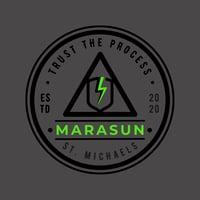How to Prevent Roof Damage from Fallen Trees: Protect Your Roof and Your Wallet
Alright, let’s get real for a second—trees are awesome. They give us shade, boost curb appeal, and make your yard feel like a little slice of paradise. But when a storm rolls in, those same trees can turn into roof-wrecking nightmares.
Fallen trees and branches are one of the leading causes of roof damage, and trust me, the repair bills aren’t pretty. The good news? A little preparation goes a long way in keeping your roof safe.
Let’s break down how you can prevent roof damage from fallen trees and save yourself a ton of stress (and cash).
1. Trim Overhanging Branches
This one’s a no-brainer. If you’ve got branches hanging over your roof, they’re basically an open invitation for trouble. Even a light windstorm can snap those branches and send them crashing onto your shingles.
What to Do:
- Trim back any branches that are within 6-10 feet of your roof.
- Focus on large, heavy branches that could cause serious damage if they fall.
- Hire a professional arborist if the branches are too high or close to power lines.
Pro Tip: Regular tree trimming doesn’t just protect your roof—it also helps your trees grow stronger and healthier. It’s a win-win.
2. Inspect Your Trees for Weakness
Not all trees are created equal when it comes to withstanding storms. Weak, dead, or diseased trees are much more likely to fall, especially during high winds or heavy rain.
How to Spot a Problem Tree:
- Look for dead or dying branches (they’ll usually be brittle and leafless).
- Check for cracks or splits in the trunk.
- Watch for signs of disease, like discolored leaves, fungus growth, or peeling bark.
- If the tree leans significantly, it could be at risk of falling.
Pro Tip: If you’re unsure whether a tree is healthy, call in a certified arborist to assess it. It’s better to be safe than sorry.
3. Remove Hazardous Trees
Sometimes, the best way to prevent roof damage is to remove the risk entirely. If a tree is too close to your home or shows signs of weakness, it might be time to say goodbye.
When to Consider Removal:
- The tree is within 15-20 feet of your home.
- The tree’s roots are damaging your foundation or underground utilities.
- The tree is leaning toward your house or has a history of dropping large branches.
Pro Tip: Removing a tree can be a tough decision, but think of it as an investment in your home’s safety. Plus, you can always plant a new tree in a safer location.
4. Clean Up After Storms
After a storm, it’s important to inspect your yard and roof for any potential hazards. Even if no branches fell during the storm, there could be weakened limbs that are ready to drop at the next gust of wind.
What to Do:
- Check your roof for debris, like leaves, twigs, or small branches.
- Inspect your trees for broken or hanging branches.
- Remove any debris from your gutters to prevent clogs and water damage.
Pro Tip: If you spot a branch that looks like it’s about to fall, don’t try to remove it yourself—call a professional.
5. Reinforce Your Roof
Sometimes, no matter how much you prepare, Mother Nature has other plans. That’s why it’s a good idea to make sure your roof is as strong as possible.
How to Reinforce Your Roof:
- Use impact-resistant shingles that can withstand falling branches.
- Install a waterproof underlayment to protect against leaks.
- Make sure your roof’s flashing and vents are properly sealed.
Pro Tip: At MARASUN, we specialize in roofing systems that are built to handle whatever nature throws at them. If you’re not sure whether your roof is up to the task, give us a call for a free inspection.
6. Know Your Insurance Policy
Even with the best preparation, accidents can happen. That’s why it’s important to know what your homeowner’s insurance covers when it comes to tree damage.
What to Check:
- Does your policy cover roof repairs caused by fallen trees?
- Are there any exclusions for certain types of trees or damage?
- What’s your deductible for storm-related claims?
Pro Tip: Take photos of your roof and trees before and after a storm to document any damage. This can make the claims process smoother if you need to file one.
Final Thoughts
Preventing roof damage from fallen trees isn’t just about protecting your home—it’s about protecting your peace of mind. By taking these steps, you can reduce the risk of damage, save money on repairs, and keep your home safe and sound.
At MARASUN, we’re here to help you every step of the way. Whether you need a roof inspection, storm damage repair, or just some expert advice, we’ve got your back. Contact us today to schedule a consultation and let’s make sure your roof is ready for whatever comes its way.
%20(1).png?width=1500&height=1500&name=MARASUN%20LOGO%20TRANSPARENT%20(1500%20x%201500%20px)%20(1).png)
%20(1).png?width=50&name=MARASUN%20LOGO%20TRANSPARENT%20(1500%20x%201500%20px)%20(1).png)


Enjoy this blog article? We'd love to hear your feedback!